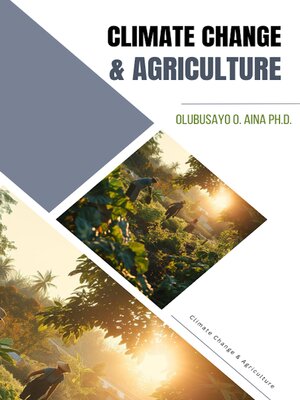
Sign up to save your library
With an OverDrive account, you can save your favorite libraries for at-a-glance information about availability. Find out more about OverDrive accounts.
Find this title in Libby, the library reading app by OverDrive.



Search for a digital library with this title
Title found at these libraries:
| Library Name | Distance |
|---|---|
| Loading... |
Climate change is no longer a distant concern—it is a present reality shaping our environment, economies, and daily lives. One of the most deeply affected sectors is agriculture, the cornerstone of human civilization and survival. From smallholder farms in sub-Saharan Africa to industrial operations in North America, no aspect of farming is immune to the growing instability of Earth's climate.
Agriculture and climate are intricately linked. Plants need predictable weather, water, and temperature conditions to grow. Farmers depend on seasonal cycles and soil health to plan their work and feed their communities. Yet, as greenhouse gas emissions alter atmospheric patterns, this delicate balance is being disrupted. Rising temperatures scorch fields, erratic rainfall floods crops or leaves them parched, and storms destroy entire harvests overnight. At the same time, agriculture itself contributes significantly to climate change through emissions from livestock, deforestation for farmland, and the use of synthetic fertilizers.
This book explores the dynamic and often uneasy relationship between climate change and agriculture. It investigates how a changing climate affects farming practices, food production, and global food security. It also looks at how agriculture can transform itself—not just to survive—but to become part of the solution to climate change. Innovations in technology, shifts in policy, and the resurgence of traditional and indigenous knowledge all offer pathways forward.
But the stakes are high. With the global population expected to surpass 9 billion by 2050, we face the immense challenge of feeding more people with fewer natural resources. At the same time, we must reduce agriculture's environmental footprint and build resilience to climate shocks that are becoming more frequent and severe.
This book is written for students, farmers, policymakers, environmentalists, and concerned citizens alike. Whether you're looking to understand the science behind these global shifts or seeking practical solutions for sustainable agriculture, this journey will equip you with knowledge and insight. By understanding the problem, we can better shape the path forward—toward a resilient, sustainable food system that supports both people and the planet.







